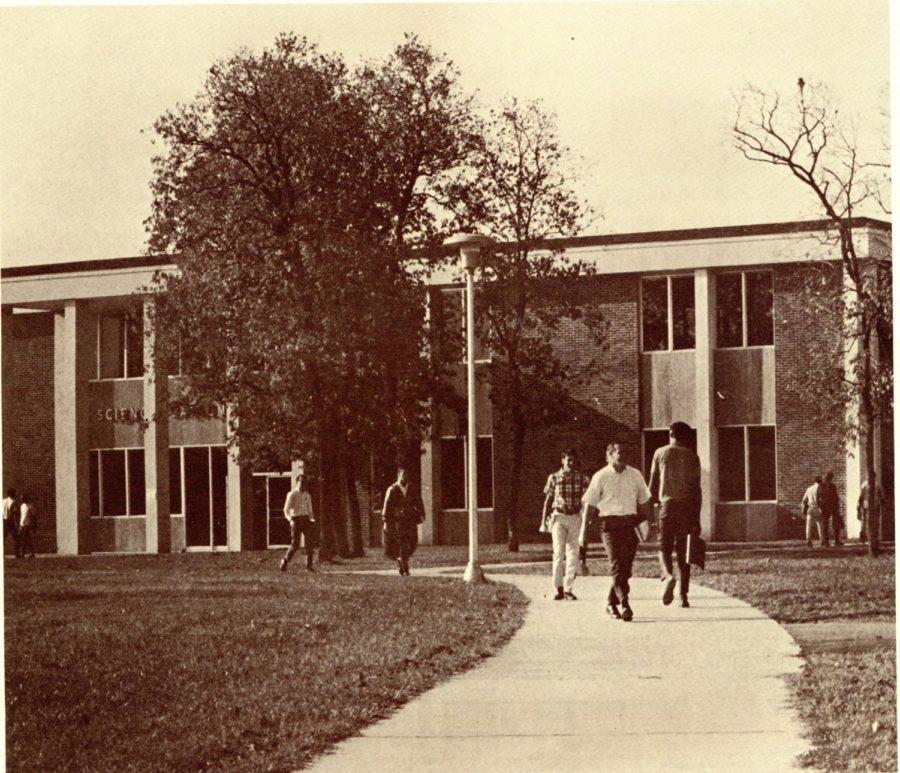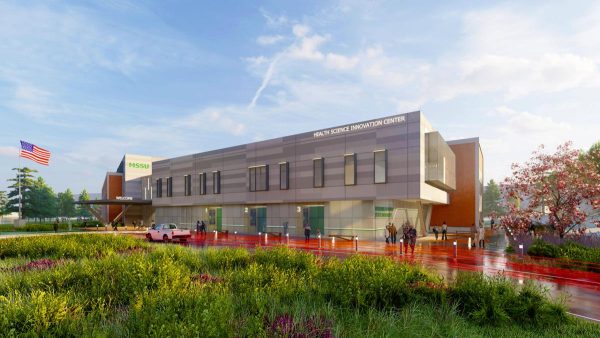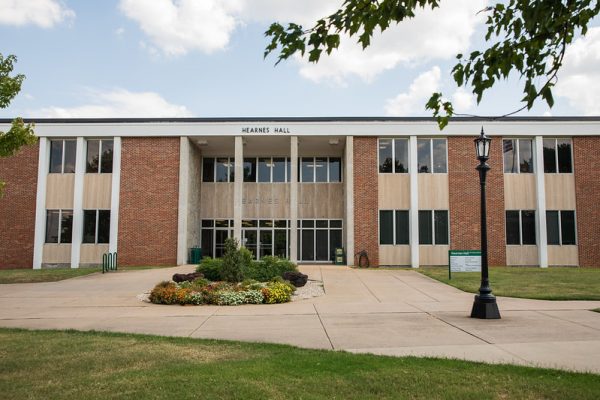Move to new campus 50 years ago created excitement, opportunity for Dr. Paul Shipman
On the first day of classes in Fall 1967, President Leon Billingsly and Dr. Paul Shipman, vice president for business affairs, watched the cars stream in and fill up the main parking lot – the only parking lot at the time. They were worried there was not enough parking.
“Well, students parked on the grass; they parked where they wanted to,” said Dr. Conrad Gubera, professor of sociology, who himself was a new faculty member 50 years ago. “Every student drove two cars, it seemed like.”
Enrollment at the downtown Joplin Junior College had been around 1,000, but the move to the new Mission Hills Estate campus resulted in a record 2,411 students for Fall 1967.
“The word was out that Joplin was on the move, so why not go to the junior college and maybe we’ll be moving right on to a four-year college,” Shipman said. “There was talk about the possibility of putting pressure on to try to become a four-year college, but there was no guarantee that it would happen.”
Before Missouri Southern was a state university it was a junior college. That junior college, under Billingsly, acquired some farm land and got to work on its future.
“We had good local contractors that did the early construction,” Shipman noted. He cooperated with contractors, architects, and engineers during his 21-year career at Missouri Southern.
The land was desolate, far from the image of today’s campus.
“We opened with six or seven buildings,” Gubera said. “That was it. They were far between. We had no shrubbery; it was cold and unwelcoming. I don’t know why anybody would want to come here except, students just did.”
Larry Hymer was a student when the campus opened that fall at Mission Hills Estate. He said it didn’t seem like a “full-fledged college yet. It was in a good location. It’s changed a lot in 50 years.”
Hymer was involved in the ongoing campus construction himself. He kept a change of clothes with him and when class was over he would go to work. He remembers the challenges of balancing college and a job.
“We had to try to make a living; we had to try to pay for everything and go to school,” Hymer said, adding that if your parents couldn’t pay for you to attend college you either didn’t go or you had to find a way yourself.
Jane Lant agrees. She attended Missouri Southern in those early days and shared the same conflicts. For her it was difficult to pay for school when few businesses would hire young people.
“They didn’t hire kids; they only hired adults,” she said. “If you didn’t have a job provided for you, there were very few opportunities for you. It was not like today. You can go get jobs everywhere. You can actually go to school for free, for crying out loud.”
“There wasn’t anyone, it seemed like, who didn’t work off campus and didn’t have a job,” Gubera said. “And it was a purely commuter school for the first few years. We didn’t even have dormitories.”
Even though the journey to college may have been difficult, Lant has fond memories of the move to the new campus. “I remember so much excitement and unbelief that we actually got the college to that point,” she reflected.
Everyone was excited – the faculty, the students, the whole community.
“I always tell people that I felt an excitement about this very major thing – change that was going to take place and help a lot of people,” Shipman said. “To put it in short term, you’re going to meet a lot of people, good people.”
Gubera described the attitude of the students who ventured into Missouri Southern’s halls. “Hey, they were going to college but were not truly college students because they wanted to get a college education while working full-time or part-time,” he said. “The students then, not unlike today, were hardworking individuals who saw an opportunity to better themselves with a college education.”
Missouri Southern has always been a beacon in the community, calling on those who seek a better future and giving them a chance to succeed.
“The opportunity for so many areas that perhaps another four-year college doesn’t – that’s what Missouri Southern represented when we first became a full-fledged college,” Lant said. “Opportunity, because we couldn’t afford to go out, far away. We could get an education at home.
“Well, I just know for me I would have never gone to college if it wouldn’t have been for that.”
Your donation will support the student journalists of Missouri Southern State University. Your contribution will allow us to purchase equipment and cover our annual website hosting costs.






























